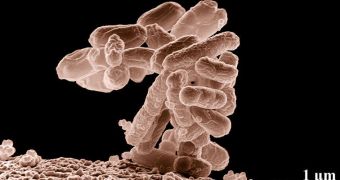The conclusions of a new scientific study provide the first evidence that microbes can indeed survive being blasted into space, traveling for millions of years, reentering an atmosphere, and then making their way to the surface of an alien body.
Until now, experts have hypothesized that this is possible, but investigations have only dealt with some of the stages such a voyage would imply. For example, work conducted aboard the International Space Station (ISS) demonstrated that microbes can endure the harshness of space.
Studies of meteorites and other space rock indicated that the microorganisms can remain trapped in stone for prolonged periods of time. A special class of rock-inhabiting organisms called endoliths can survive reentering the Earth's atmosphere.
While these researches dealt with the journey microorganisms would take through space, and the shape they would be in upon arriving at their destination, what remained unclear was whether they could withstand being ejected from a planet.
Such a violent process involves either a massive volcanic eruption, or a powerful collision between that planet or moon with a space impactor. The latter could be an asteroid or a comet, Daily Galaxy reports.
During the new investigation, an international team of researchers led by Gerda Horneck of the Institute of Aerospace Medicine in Cologne, Germany, tested to see what type of organisms would survive such catastrophic events if they were ejected into space.
The group looked at lifeforms including bacterial endospores, endolithic cyanobacteria and lichens, and in the end determined that a wide range of microorganisms could potentially survive such an impact.
“Our results enlarge the number of potential organisms that might be able to reseed a planetary surface after early very large impact events, and suggest that such a re-seeding scenario on a planetary surface is possible with diverse organisms,” the investigators explain.
What this means is that planets and moons can exchange biological material among themselves. This is a remarkable breakthrough in the field of astrobiology, as it verifies that the seeds of life may have indeed arrived here on other celestial bodies.
At the same time, lifeforms originating on Earth may have been taken to other places across the Milky Way, aboard meteorites and other fragments. The research is all the more important since Earth and Mars are known to have exchanged material over billions of years.
Earth may have also “communicated” with the Saturnine moon Enceladus, which features an ocean of liquid water underneath a miles-thick ice crust. If the seeds of life were taken there from Earth, then that ocean may be habitable, astrobiologists say.

 14 DAY TRIAL //
14 DAY TRIAL //